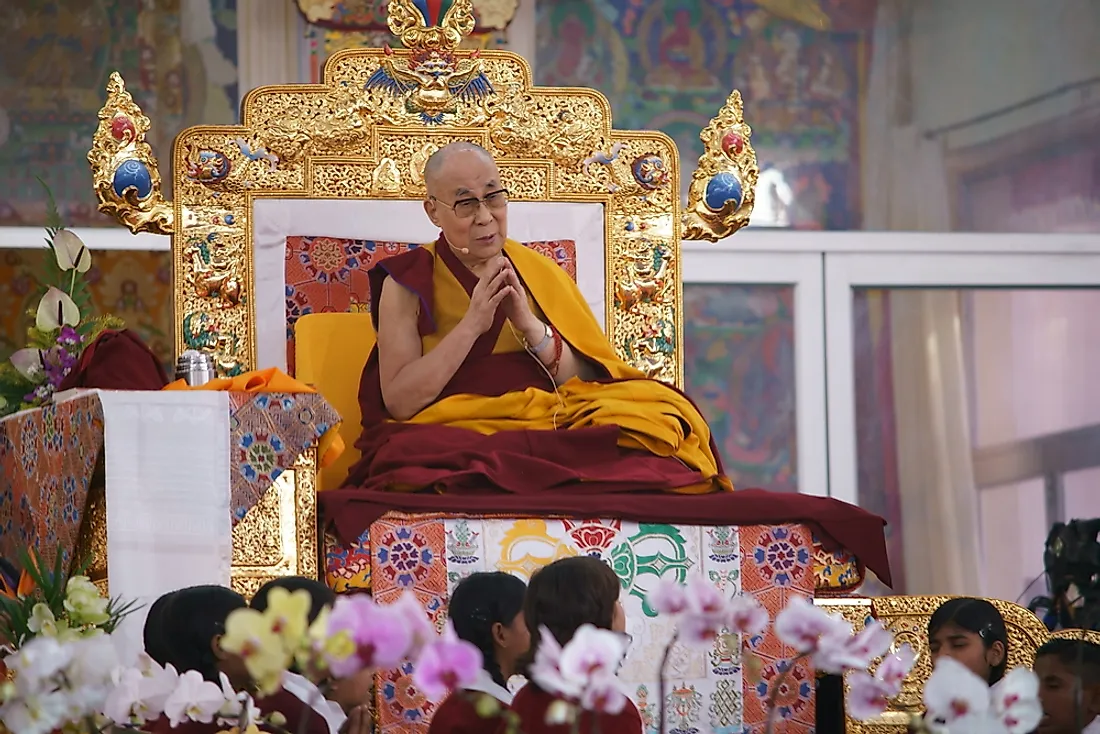Where Does the Dalai Lama Live?

The Dalai Lama is the spiritual and political leader of a region called Tibet that is currently occupied by China. The current Dalai Lama resides in India and still performs his spiritual duties to his followers and the occupied Tibet autonomous region in China. It is important to note that the term Dalai Lama is just but a title given to a person who is chosen to play the role of the spiritual leader. As such, the current Dalai Lama is named Lhamo Thondup and he has been holding the title since February 22, 1940.
14th Dalai Lama
Born on July 6, 1935, in a place called Taktser in northeastern Tibet, Lhamo Thondup was discovered by a delegation sent by the 13th Dalai Lama who believed that the then two-year-old boy was a reincarnation of the 13th leader. After conducting a series of tests on the boy, they took him to a monastery known as a Kumbum where he trained to be a monk. Before he was taken there, he changed his name, took the throne at the age of four, and finally became a monk at the age of six in the year 1940.
Chinese Takeover
Tibet was caught up in political struggles with its powerful neighbor China. By this time, the Communist Party, under the leadership of Mao Zedong, ruled China. The tensions dated back in history where the 13th Dalai Lama had declared their independence back in 1902. The dispute took a turn for the worse when the Chinese laid claim over Tibet and put plans to invade in 1942 to prevent the Tibetans from co-operating with the Japanese who had invaded mainland China. Chinese forces took control of Tibet in October 1950 after defeating Tibetan forces.
Exile
On November 17, 1950, the 14th Dalai Lama was installed as the leader of the Tibet region. His reign was short-lived owing to the tensions with Beijing over the liberation process of Tibet. Despite the series of meetings held in Beijing, there was no progress. The uprising of 1959 in Tibet highlighted the frustrations with the liberal agenda and it resulted in the exile of the 14th Dalai Lama to India where he formed a government-in-exile in Dharamshala. Up to eighty thousand Tibetan refugees followed him to escape the brutal Chinese military crackdown on the uprising that they crushed.
Achievements and Honors
In 1989, the 14th Dalai Lama won the Nobel Peace Prize for his advocacy of non-violent means to liberate his occupied homeland. From his base in exile, he has been engaged in speaking engagements around the world to seek support over his Tibetan activities. He has also advocated for the peaceful coexistence of people of different faiths and social fairness. He has criticized capitalism for the economic problems plaguing the world and the destruction of the environment. On May 29, 2011, the Dalai Lama retired from the Central Tibetan Administration, and had expressed a desire to hand over to the 15th Dalai Lama.











